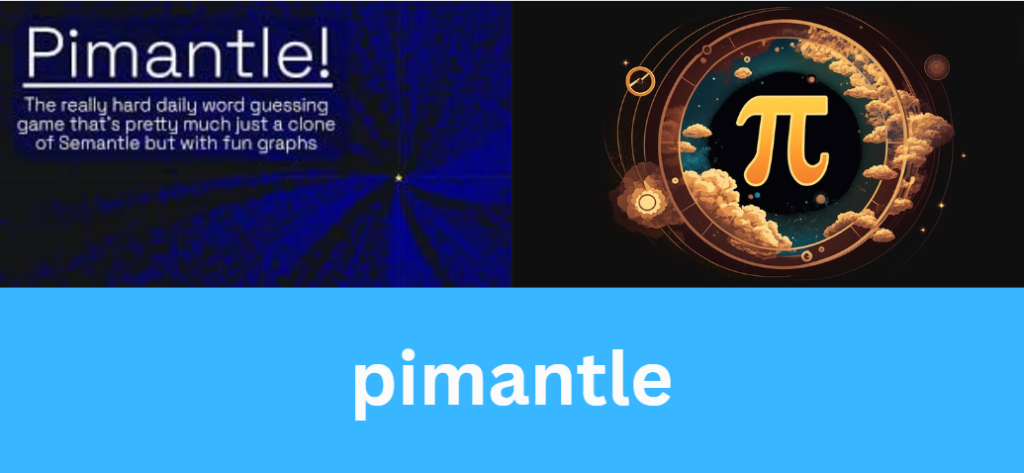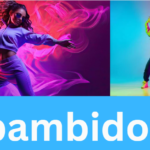Contents
Introduction
In the landscape of word games, where classics like Scrabble and crosswords dominate, a new contender has emerged, captivating the minds of language enthusiasts across the globe. This contender is Pimantle. With its unique twist on traditional word games, Pimantle has become a sensation, particularly in the United States, where it has gained a loyal following. But what makes Pimantle stand out in a crowded market? In this article, we’ll explore Pimantle in-depth, dissecting its mechanics, exploring its semantic approach, and providing insights and strategies that go beyond what you can find online.
What is Pimantle?
Pimantle is a word-guessing game that builds upon the foundation laid by Semantle, a popular word game known for its challenging nature. However, Pimantle introduces a graphical output that visualizes the semantic relationships between your guesses, offering a more interactive and engaging experience. Unlike traditional word games that rely solely on letter patterns or vocabulary knowledge, Pimantle challenges players to think about the meaning and relationships between words, making it both a test of vocabulary and cognitive association.
The Origins of Pimantle
Pimantle is a derivative of Semantle, which was created by David Turner, a software engineer with a passion for word games. Semantle itself was inspired by other semantic-based games like Wordle but took a more complex approach by requiring players to guess a word based on semantic proximity rather than simple letter matches. Pimantle builds on this by adding a visual component, allowing players to see how close their guesses are to the target word in a graphical format.
How Pimantle Works
At its core, Pimantle is a game of word association. Each game begins with a target word that players must guess. The twist is that the game doesn’t provide any direct clues about the target word. Instead, players enter guesses, and the game ranks these guesses based on how semantically close they are to the target word. The graphical output then shows the relationships between your guesses, helping you refine your future guesses.
Key Features of Pimantle:
- Semantic Proximity: The game ranks guesses based on how semantically similar they are to the target word.
- Graphical Output: Pimantle’s standout feature is its graphical display, which visualizes the connections between words, making it easier to understand the relationships and guiding players toward the correct answer.
- Unlimited Guesses: Unlike some word games that limit the number of guesses, Pimantle allows for unlimited attempts, encouraging experimentation and learning.
- Daily Challenges: Pimantle offers a new word every day, keeping the game fresh and engaging for regular players.
The Semantic Element: A Deeper Understanding
The key to success in Pimantle lies in understanding semantic relationships. Unlike games that focus on spelling or letter patterns, Pimantle challenges players to think about the meanings and associations between words. This requires a different kind of thinking—one that goes beyond surface-level wordplay.
In Pimantle, each guess is evaluated not by its similarity in letters but by its meaning. For example, if the target word is “ocean,” a guess like “sea” would rank higher than a guess like “lake” because “sea” is more semantically related to “ocean.” The game’s algorithm uses a complex model to determine these relationships, drawing on large datasets of language use.
Pimantle vs. Semantle: A Comparative Analysis
While Pimantle is directly inspired by Semantle, there are several key differences that set it apart:
- Visual Feedback: The most significant difference is the graphical output in Pimantle, which provides a visual representation of how close each guess is to the target word. This feature is absent in Semantle, where feedback is purely textual.
- User Engagement: Pimantle’s visual element makes the game more engaging and accessible to a broader audience, especially those who prefer visual learning or who find purely textual games less engaging.
- Learning Curve: While both games have a steep learning curve, Pimantle’s visual feedback can help players understand the game’s mechanics more quickly, potentially making it less frustrating for beginners.
Why Pimantle is More Than Just a Game
Pimantle is more than just a pastime; it’s a tool for cognitive development. By focusing on semantic relationships, the game encourages players to think critically about language, enhancing their vocabulary and their understanding of how words are related. This makes Pimantle an excellent exercise for the brain, particularly in enhancing associative thinking and memory.
Cognitive Benefits of Playing Pimantle:
- Improved Vocabulary: Regularly playing Pimantle can significantly expand your vocabulary as you explore new words and their meanings.
- Enhanced Associative Thinking: Pimantle strengthens your ability to make connections between concepts, which is a crucial skill in both academic and professional settings.
- Better Memory Retention: By challenging players to recall and relate words based on their meanings, Pimantle can help improve memory retention, particularly for new vocabulary.
Strategies for Mastering Pimantle
While Pimantle may seem daunting at first, there are strategies you can employ to improve your chances of success. Here are some expert tips that go beyond the basics:
1. Start with Broad Concepts
When you begin a game, start with broad, general words rather than specific terms. This increases your chances of getting a high-ranking guess early on, which can guide your subsequent guesses.
2. Use the Graphical Feedback Wisely
The graphical output is your best friend in Pimantle. Pay close attention to how your guesses are related in the graph, and use this information to refine your guesses. If you notice that several of your high-ranking guesses are clustered together, you’re likely on the right track.
3. Think About Synonyms and Antonyms
Because Pimantle is based on semantic relationships, thinking about synonyms and antonyms can be a powerful strategy. If your guess is ranked high, think of related synonyms. If it’s ranked low, consider words with opposite meanings.
4. Experiment with Word Categories
Try to categorize your guesses. For example, if you’re dealing with a high-ranking guess related to nature, stick with words in the same category like animals, plants, or natural phenomena. This categorization can help you narrow down the possibilities.
5. Learn from Your Mistakes
Each guess, even if incorrect, provides valuable information. Don’t be discouraged by low-ranking guesses; instead, use them as learning opportunities to understand the relationships between words better.
6. Keep Track of Common Patterns
As you play more games, you may start noticing common patterns in how certain words are related. Keeping track of these patterns can give you an edge in future games.
The Social Aspect of Pimantle
Pimantle isn’t just a solitary game—it has a thriving online community where players share strategies, discuss difficult words, and even compete in daily challenges. This social aspect adds another layer of engagement, making Pimantle a game that can be enjoyed both individually and collaboratively.
Joining the Pimantle Community
If you’re looking to deepen your Pimantle experience, consider joining online forums or social media groups dedicated to the game. Here, you can share your experiences, learn from others, and even participate in community-created challenges.
Competing in Daily Challenges
Pimantle’s daily challenges are a great way to test your skills against other players. Each day, a new word is chosen, and players around the world compete to guess it in the fewest attempts. This competitive aspect adds excitement to the game and can be a great way to measure your progress over time.
The Future of Pimantle
Given its innovative approach to word games, Pimantle is poised to become a staple in the genre. As more players discover the game, we can expect to see new features, updates, and possibly even spin-offs that build on its core mechanics.
Potential Enhancements
- Expanded Word Database: To keep the game fresh, developers might expand the word database, adding more obscure or challenging words.
- Multiplayer Mode: A multiplayer mode could allow players to compete against each other in real-time, adding a new dimension to the game.
- Custom Challenges: Allowing players to create and share their own challenges could further engage the community and expand the game’s replayability.
Pimantle in Education
Pimantle’s focus on semantic relationships makes it an excellent tool for educational purposes. Teachers could use the game to help students build vocabulary, improve their understanding of word meanings, and develop critical thinking skills. As educational games continue to grow in popularity, Pimantle could see adoption in classrooms as a fun and effective learning tool.
Conclusion
Pimantle is more than just a game; it’s a mental exercise that challenges players to think about language in new and innovative ways. By focusing on semantic relationships and providing visual feedback, Pimantle offers a unique and engaging experience that sets it apart from other word games. Whether you’re a casual player looking for a fun challenge or a word enthusiast seeking to expand your vocabulary and cognitive skills, Pimantle has something to offer.
With the right strategies, a deep understanding of the game’s mechanics, and a willingness to learn, you can master Pimantle and enjoy all the cognitive benefits it has to offer. As the game continues to evolve, we can expect even more exciting developments that will keep players engaged and coming back for more.
So, are you ready to take on the challenge of Pimantle? Dive in, start guessing, and see where your semantic journey takes you.
FAQs
1. What is Pimantle?
Pimantle is a word-guessing game that challenges players to guess a target word based on semantic proximity. The game provides graphical feedback that shows the relationships between your guesses, making it easier to refine your attempts and get closer to the correct word.
2. How does Pimantle differ from Semantle?
While both games are based on semantic relationships, Pimantle offers graphical output that visualizes the connections between words, making it more interactive and engaging compared to the purely textual feedback of Semantle.
3. Can I play Pimantle on my mobile device?
Yes, Pimantle is available to play on both desktop and mobile devices, making it accessible wherever you are. The game’s interface is optimized for mobile play, ensuring a smooth and enjoyable experience on smaller screens.
4. How can I improve my performance in Pimantle?
To improve in Pimantle, focus on understanding semantic relationships between words. Start with broad guesses, use the graphical feedback to guide your attempts, and think about synonyms, antonyms, and word categories to narrow down your options.
5. Is there a community for Pimantle players?
Yes, Pimantle has a growing online community where players can share strategies, discuss challenges, and compete in daily games. Joining these communities can enhance your Pimantle experience and help you improve your skills.


